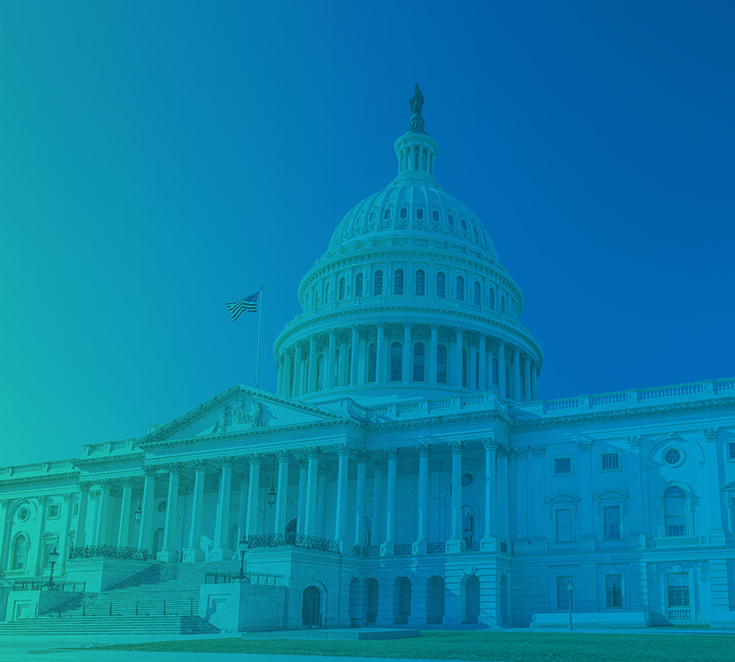Summary
The Office of the Comptroller of the Currency (OCC) is issuing this bulletin to inform national banks, federal savings associations, and federal branches and agencies (collectively, banks) about key data fields that the OCC has determined examiners will typically use to test and validate the accuracy and reliability of home mortgage loan data collected beginning in 2018. This bulletin sets out the key data fields separately for banks that are required to report all of the data, as set forth in the Home Mortgage Disclosure Act (HMDA) rule issued in October 20151 and revised in September 2017,2and for banks that qualify for a partial exemption from HMDA reporting under the interpretive and procedural rule3 issued by the Consumer Financial Protection Bureau (CFPB) in August 2018.
This Bulletin rescinds OCC Bulletin 2017-41, “Home Mortgage Disclosure Act: Interagency Key Fields.”
Note for Community BanksThis guidance applies to all OCC-supervised banks subject to HMDA data collection and reporting requirements.
|
Highlights
Key data fields are identified to support the efficient and effective evaluation of banks’ compliance with the HMDA requirements. Of 110 data fields, 37 have been identified as key fields by the OCC, Federal Reserve Board (FRB), and Federal Deposit Insurance Corporation (FDIC) on an interagency basis. OCC examiners will typically test and validate these 37 key fields for the banks that are required to collect, record, and report information for all HMDA data fields. For banks that qualify for a partial exemption from the HMDA data collection, recording, and reporting requirements, examiners will typically test and validate 21 of those 37 fields, as identified in this bulletin.
Background
The HMDA, which is implemented by Regulation C (12 CFR 1003), requires certain financial institutions to collect, record, and report information about their mortgage lending activity.4 Amendments to Regulation C (HMDA amendments)5 establish the data to be collected.6 To ensure compliance with the HMDA’s requirements, traditionally the OCC, the FRB, and the FDIC have identified and focused examination-related testing of HMDA data on certain agency-designated key data fields. Key data fields are those fields considered to be most important to ensuring the integrity of analyses of overall HMDA data.
Separately, the Federal Financial Institutions Examination Council (FFIEC) members7issued “FFIEC HMDA Examiner Transaction Testing Guidelines” (guidelines) for the FFIEC members’ examination staff to use in assessing the accuracy of the HMDA data that financial institutions record and report. The guidelines include a data sampling process that involves prioritizing designated data fields for review or reviewing all data fields within a sample. The guidelines themselves, however, do not establish designated key data fields. In an effort to promote efficiency, coordination, and consistency, the OCC, the FRB, and the FDIC jointly identified and designated 37 of the HMDA data fields to be collected beginning January 1, 2018, pursuant to the HMDA amendments, as key fields for purposes of testing and validating bank data. In identifying the key fields, the OCC, the FRB, and the FDIC considered a variety of factors, including the HMDA’s requirements, the goal of ensuring the efficiency of bank examinations, and the effective validation of HMDA data important to evaluating compliance with the Community Reinvestment Act and fair lending requirements. The OCC, the FRB, the FDIC also took into account the likelihood that a data field would be reported correctly based on past examination experience.
Section 104(a) of the Economic Growth, Regulatory Relief, and Consumer Protection Act (Economic Growth Act), enacted in May 2018, amends section 304(i) of the HMDA to exempt certain institutions from collecting, recording, and reporting some HMDA data fields. The exempted data points include information such as length of term, points and fees, prepayment penalties, reasons for denial,8 and Annual Percentage Rate for originated or purchased loans. The CFPB’s interpretive and procedural rule issued in August 20189 implements the requirements of section 104(a). The rule provides clarification and guidance to all banks covered by the partial exemption and explains what data must be collected, recorded, and reported.
To qualify for the partial exemption for closed-end mortgage loans, a bank must have originated, in each of the two preceding calendar years, fewer than 500 closed-end mortgage loans.
To qualify for the partial exemption for open-end lines of credit, a bank must have originated, in each of the two preceding calendar years, fewer than 500 open-end lines of credit.
The partial exemption is not available to banks that do not meet certain Community Reinvestment Act performance evaluation rating standards.
To evaluate financial institutions’ compliance with HMDA requirements, OCC examination staff will focus on identified key data fields during transaction testing pursuant to HMDA for data collected on or after January 1, 2018. Examination staff will focus on the 37 fields listed below for banks that are subject to collecting, recording, and reporting information for all HMDA data fields. Testing for banks that qualify for a partial exemption from HMDA data collection, recording, and reporting requirements will focus on 21 key fields, as set forth below, and validate that the bank meets the criteria for a partial exemption. In certain circumstances, however, and consistent with the FFIEC guidelines, examination staff may determine that it is appropriate to review additional HMDA data fields.
Proper reporting of HMDA data is important in assessing the accuracy of the HMDA data that financial institutions record and report. Where errors that exceed established thresholds10 are identified in an institution’s HMDA data, the OCC supervisory office has discretion in requiring the institution to correct specific errors, without requiring resubmission of the data. The supervisory office may require resubmission of HMDA data when the inaccurate data are indicative of systemic internal control weaknesses that call into question the integrity of the institution’s entire HMDA data report.
The following table lists the key data fields that examiners will use to verify the accuracy of the HMDA Loan/Application Register (LAR) for banks that are full HMDA reporters and separately for banks that qualify for the partial exemption.
| 37 Key Data Fields That Apply to Full HMDA Reporters | 21 Key Data Fields That Apply to Banks That Qualify for the Partial Exemption |
|---|
| 3 Universal Loan Identifier (ULI)
|
|
| 4 Application Date
| 4 Application Date
|
| 5 Loan Type
| 5 Loan Type
|
| 6 Loan Purpose
| 6 Loan Purpose
|
| 9 Occupancy Type
| 9 Occupancy Type
|
| 10 Loan Amount
| 10 Loan Amount
|
| 11 Action Taken
| 11 Action Taken
|
| 12 Action Taken Date
| 12 Action Taken Date
|
| 18 Census Tract
| 18 Census Tract
|
| 19 Ethnicity of Applicant or Borrower: 1
| 19 Ethnicity of Applicant or Borrower: 1
|
| 25 Ethnicity of Co-Applicant or Co-Borrower: 1
| 25 Ethnicity of Co-Applicant or Co-Borrower: 1
|
| 33 Race of Applicant or Borrower: 1
| 33 Race of Applicant or Borrower: 1
|
| 34 Race of Applicant or Borrower: 2
| 34 Race of Applicant or Borrower: 2
|
| 41 Race of Co-Applicant or Co-Borrower: 1
| 41 Race of Co-Applicant or Co-Borrower: 1
|
| 42 Race of Co-Applicant or Co-Borrower: 2
| 42 Race of Co-Applicant or Co-Borrower: 2
|
| 51 Sex of Applicant or Borrower
| 51 Sex of Applicant or Borrower
|
| 52 Sex of Co-Applicant or Co-Borrower
| 52 Sex of Co-Applicant or Co-Borrower
|
| 55 Age of Applicant or Borrower
| 55 Age of Applicant or Borrower
|
| 56 Age of Co-Applicant or Co-Borrower
| 56 Age of Co-Applicant or Co-Borrower
|
| 57 Income
| 57 Income
|
| 61 Lien Status
| 61 Lien Status
|
| 62 Credit Score of Applicant or Borrower
|
|
| 63 Credit Score of Co-Applicant or Co-Borrower
|
|
| 75 Origination Charges
|
|
| 76 Discount Points
|
|
| 77 Lender Credits
|
|
| 78 Interest Rate
|
|
| 80 Debt-to-Income Ratio
|
|
| 81 Combined Loan-To-Value Ratio
|
|
| 82 Loan Term
|
|
| 88 Property Value
|
|
| 89 Manufactured Home Secured Property Type
|
|
| 91 Total Units
| 91 Total Units
|
| 102 Automated Underwriting System Result: 1
|
|
| 108 Reverse Mortgage
|
|
| 109 Open-End Line of Credit
|
|
| 110 Business or Commercial Purpose
|
|
Compliance Statement
As announced in December 2017 on an interagency basis, the OCC does not intend to require data resubmission for HMDA data collected in 2018 and reported in 2019, unless data errors are material. Furthermore, the OCC does not intend to assess penalties with respect to errors in data collected in 2018 and reported in 2019. Collection and submission of the 2018 HMDA data will provide banks with an opportunity to identify any gaps in their implementation of the amended Regulation C and make improvements in their HMDA compliance management systems for future years. Any examinations of 2018 HMDA data will be diagnostic, to help banks identify compliance weaknesses, and the OCC will credit good-faith compliance efforts.
Further Information
Please contact Vonda J. Eanes, Director for CRA and Fair Lending Policy, Compliance Risk Policy Division at (202) 649-5470.
Grovetta N. Gardineer
Senior Deputy Comptroller for Bank Supervision Policy
1 80 Fed. Reg. 66128.
2 82 Fed. Reg. 43088.
3 83 Fed. Reg. 45325.
4 12 USC 2801 et seq.
5 80 Fed. Reg. 66127.
6 Beginning with data collected on or after January 1, 2018, financial institutions subject to the HMDA will collect and report data on covered loans specified in 12 CFR 1003.4(a)(1)-(38) on a loan application register containing 110 data fields, as specified in the FFIEC Filing Instructions Guide (FIG). Refer to FFIEC Resources for HMDA Filers for additional information.
7 The FFIEC members are the FRB, FDIC, the OCC, the CFPB, the National Credit Union Administration, and the State Liaison Committee. The FFIEC members promote compliance with federal consumer protection laws and regulations through supervisory and outreach programs. The HMDA is among these laws and regulations.
8 OCC-regulated banks and their subsidiaries are required to report reasons for denial on the HMDA Loan/Application Register (LAR) regardless of partial exemption status. Refer to 12 CFR 27 (national banks) and 12 CFR 128.6 (federal savings associations).
9 83 Fed. Reg. 45325.
10 The information provided in this bulletin supplements guidance issued on August 25, 2017, through OCC Bulletin 2017-31, “FFIEC HMDA Examiner Transaction Testing Guidelines,” which indicates examiners should direct a bank to correct any data field in its full HMDA LAR for any field where the error rate exceeds the stated resubmission threshold. The bank may also be required in such cases to resubmit its HMDA LAR with the corrected data field(s). OCC examiners will consult with their supervisory office and, as applicable, OCC’s Compliance Supervision Management Division to determine whether resubmission is required based on specific facts and circumstances.




